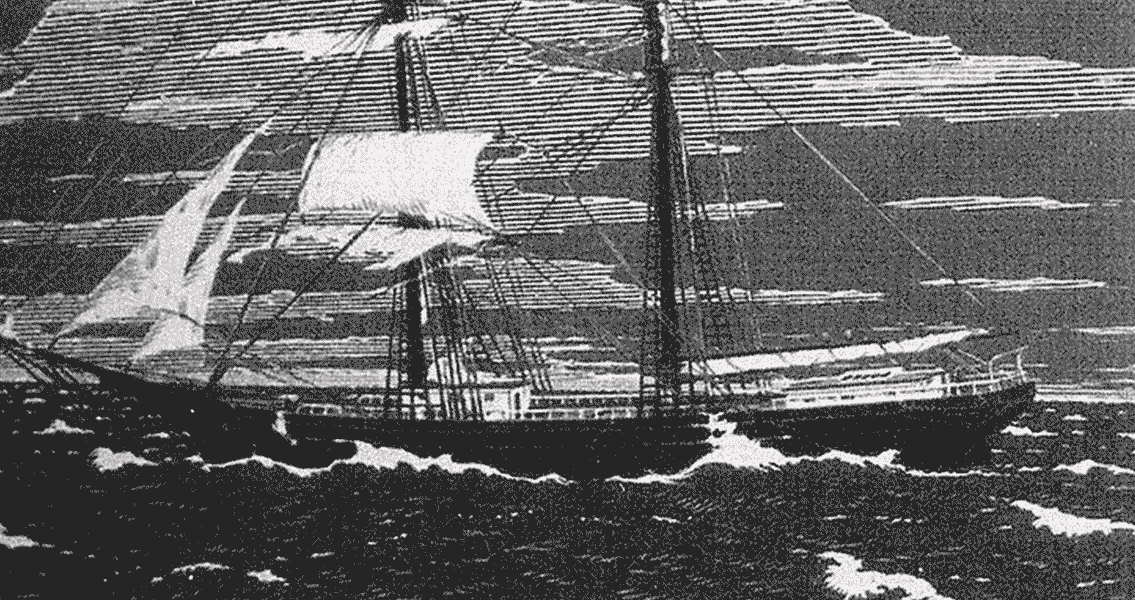<![CDATA[On the 7th November 1872 one of the great unexplained stories in history started, when the Mary Celeste set sail from New York to Genoa. On the 5th December that year the ship was found abandoned but largely undamaged 4oo miles east of the Azores. To this day the fate of the ship's crew, and the events between 7th November and 5th December, are still unexplained. The ship set sail with a crew of seven men plus Captain Benjamin Spooner Briggs and his wife and young daughter. The 282 ton ship was carrying a cargo of 1,701 barrels of alcohol. It was a Canadian built vessel joint owned by James H. Winchester, Sylvester Goodwin and Briggs himself. Briggs was renowned as a person of sound character - a strict abstainer of alcohol and devout reader of the Bible. At the initial inquiry about the ship's fate, Winchester testified to Brigg's honesty and courage, claiming he would only abandon a ship if he believed his life depended on doing so. The British ship Dei Gratia spotted the Mary Celeste behaving erratically in the Atlantic Ocean. An acquaintance of Briggs, the Dei Gratia's captain David Morehouse was aware that the Mary Celeste had left New York eight days earlier. Morehouse was concerned as he knew the Mary Celeste should have already reached its destination, so he sent a boarding party to see if the crew required any assistance. Superficially the ship was ok, but there were no signs of the crew. Below deck the boarding party made some unusual observations. The ship's charts were in a state of disarray, suggesting the crew had either encountered stormy weather or some kind of panic had gripped the ship. The crewmen's belongings were all still in their quarters, which suggested the ship had been abandoned suddenly. The Mary Celeste's only lifeboat was missing, and one of the ship's two pumps had been dismantled. The cargo was largely intact, and enough food and water to provide for the crew for six months remained in the stores. Around three feet of water had flooded the ship's hull - a significant amount but not enough to cause any real peril. Recovered ship's logs shed little light on what had happened to the Mary Celeste's crew. The last entry was made at 5:00am on the 25th November, and recorded the arrival in the Azores. Prior to that the log mentions the ship enduring two weeks of challenging weather for the majority of its voyage, which may explain the water in the hull, but gives no clues as to why an experienced crew decided to abandon their vessel. The mystery of the Mary Celeste has since been absorbed into popular culture. Writers have fantasised about the fate of the ship, beginning with Arthur Conan Doyle's short story about the 'Marie Celeste', which was actually mistaken as a factual account by several newspapers. Literary explanations have since ranged from alien abduction to piracy. Since the day the ship was brought unmanned to Gibraltar, various hypotheses have been made about what happened to it. Right away the crew of Del Gratia were viewed with suspicion, as they stood to gain a significant salvaging fee from the Celeste's insurers. Other explanations have suggested that a release of alcohol vapours from the ship's cargo panicked the crew into thinking there was about to be an explosion, making them prematurely abandon ship. This was the suggestion made by Winchester at the initial inquiry, and one that is still popular today. A quick search of the internet reveals that there are hundreds of theories about what happened to the Mary Celeste. We will probably never know for sure, which just adds to this fascinating mystery. ]]>
The Mary Celeste Sets Sail
